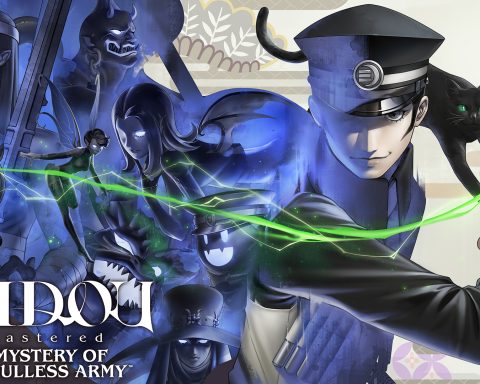Cateia Games are well known for publishing interesting takes on genres and are renowned for not being scared to try a little bit of innovation. The tales from Dragon Mountains: the Strix is an eyecatching addition to the Hidden Object game genre, and in the innovative tradition provides a relatively unique splash of adventure. In the Strix, Cateia have provided an enjoyable and beautifully crafted way to pass an afternoon.
 |
| Uh oh. Fog always means bad stuff |
Hidden object games are deceptively simple. Using the environments provided, the player endeavours, using point and click mechanics, to interact in carefully constructed images so as to discover the various objects hidden carefully in them. The Strix does this through the theme of horror: your adventure begins is as a granddaughter whose increasingly real nightmares coincide with the delivery of your grandmother’s medallion, following her sudden and mysterious disappearance.
The genre has a great place in many casual gamers’ hearts for it provides a method of constant gratification with consistent and numerous goal achievement followed by noticeable progression.
 |
| Spot the demon… he’s hiding |
A flaw in Hidden Object games are that they do not offer much in the way of variation, where the Strix really stands out. Here, it offers three distinct modes: easy, casual and adventure. True to its nomenclature, the adventure mode does result in a game that is less finding objects and more finding solutions in accordance to a list of objectives. This is very intuitive and intelligent, and deserves a great deal of credit. It should be noted that the easy and casual modes are not as detailed or intricate as most of its rivals, but the adventure mode is highly redeemable even if it, too, is not extensive.
One thing that must be pointed out is the artwork. It is beautiful at times, scary (the right way) at others and some of the landscapes or images placed in front of you are things that are difficult to be torn away from. Likewise the art direction gets plaudits for the musical score, which is perfect for the horror genre and features some wonderful cello tones. The voice acting and cut scenes are likewise extremely well matched to the extent that if you are not a horror fan or are skittish, I would recommend not playing this whilst alone in an apartment, at night with the wind howling. That said, it’s also a little tongue in cheek, as some horror fans may find it a little on the cheesy side, but overall it is enjoyable yet quirky. One issue may be that the main characters fleshy tones look especially vampirish, but in the current literary climate this is almost mandated.
The game is by no means perfect. The adventure mode (the most ‘difficult’ of the three) is over in about 3-4 hours and replayability, like most hidden object titles, is not high. There is no variability in item placement and the puzzles are of a ridiculously simple and rudimentry design.
 |
| The environments are genuinely beautiful |
All in all, this rather different game does deserve a place on the shelf and is absolutely worthwhile as a purchase for an afternoon of fun. Further, its many different modes would provide an excellent introduction should a player not have experienced hidden object games previously.
– Owen S







